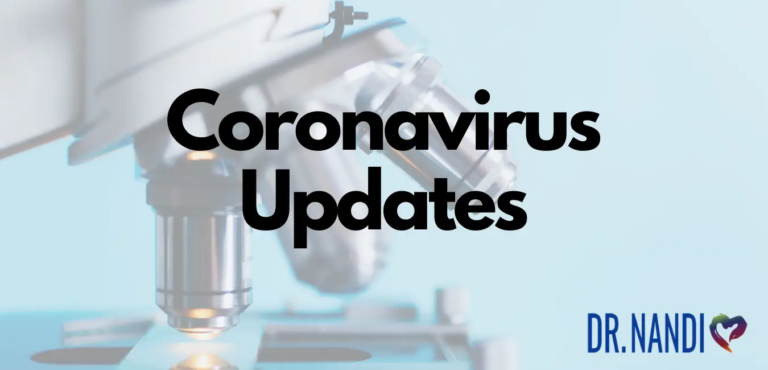In a world where the health and well-being of our beloved pets are as important as our own, a pressing concern has surfaced in the lives of one of the most cherished dog breeds: the Golden Retriever.
Known for their heartwarming smiles and boundless energy, these furry companions have been an integral part of many families for decades. Yet, a troubling trend has emerged – a noticeable decline in their lifespan.
Let’s delve into the root causes of this issue, particularly focusing on the role of diet in the diminishing longevity of Golden Retrievers. As we explore this topic, we’ll unveil some startling truths and provide practical, health-centric solutions to nurture the lives of these golden-hearted friends.
A Glance at the Past: The Declining Lifespan of Golden Retrievers
Rewind a few decades, and you’ll find that Golden Retrievers were the epitome of canine health and longevity, often gracing their human companions with 16 to 17 years of joy and loyalty. This remarkable lifespan in the 1970s paints a vivid picture of robust health and vitality.
Fast forward to the present day, and a starkly different reality confronts us. The average lifespan of these affectionate canines has drastically reduced to around 10 to 12 years. This significant decrease isn’t just a statistic; it’s a reflection of underlying health issues that need urgent attention.
It’s perplexing to witness such a decline in lifespan despite the monumental strides in veterinary medicine and the availability of advanced vaccines. Our furry friends are better protected against infectious diseases than ever before, yet their overall lifespan tells a different story.
This contradiction raises an important question: what’s missing in our approach to their health and well-being? As we uncover the answers, it becomes clear that the problem may not lie in the diseases we’ve learned to combat but in something as fundamental as their daily diet.

Unmasking the Truth: The Deceptive World of Commercial Dog Foods
In the pursuit of keeping our beloved pets healthy and happy, it’s crucial to scrutinize what lies behind the glossy images and persuasive marketing of commercial dog foods.
Marketing Gimmicks vs. Reality
The dog food industry, dominated by brands like Beneful, has long mastered the art of appealing marketing. Their advertisements, filled with vibrant visuals of nutritious-looking kibble and playful dogs, create a comforting illusion of health and care.
However, the reality beneath this colorful facade is concerning. These enticing colors and textures in dog food are often not the result of wholesome ingredients but a concoction of harmful synthetic dyes and additives. This revelation prompts a critical question: Are we unintentionally compromising our pets’ health in the guise of nourishment?
The Hidden Dangers in Your Dog’s Bowl
Unveiling the contents of many commercial dog food brands reveals a list of concerning ingredients. Here are some of the common synthetic dyes often found in these products:
- Red 40: Far from just a vibrant color, Red 40 is a dye that can contain contaminants known to cause cancer. Additionally, it’s been linked to ADHD and hyperactivity in children, raising concerns about similar effects in pets.
- Yellow 5 (Tartrazine): Common in Europe and notorious for its side effects, Yellow 5 comes with a warning label due to its association with asthma, allergies, thyroid tumors, ADHD, and even chromosomal damage.
- Blue 2: Often used to achieve a pleasing hue, Blue 2 has been linked to brain tumors and allergic reactions, making its frequent use in pet foods a worrisome practice.
- Yellow 6: This dye is not only potentially linked to asthma but has also been known to cause adrenal gland and kidney tumors in animal studies.

The Shared Reality: Artificial Dyes in Our Everyday Products
While we’ve highlighted the risks of artificial dyes in pet foods, it’s crucial to recognize that these same substances are frequently found in many products consumed by humans. The ubiquity of these dyes in our daily lives underscores the broader implications for health and wellness in both pets and their owners.
Red Dye 40 is prevalent in a variety of human food products. It’s found in cakes, frosting, pastries, cereals, candy, gum, yogurt, puddings, gelatins, ice cream, popsicles, sodas, sports drinks, energy drinks, protein powders, and even chips and other snack foods.
Meanwhile, Blue Dye #1 (Brilliant Blue) is often in baked goods like cakes and cupcakes, ice creams, canned peas, popsicles, icing sugar, drinks, dessert powders, and cereals. Blue #2 (Indigotin), known for its royal blue or indigo color, is found in brightly colored beverages, candies, pet food, and many drugs.
Yellow Dye #5 (Tartrazine) is a popular additive in baked goods, pet food, candies, cereals, desserts, powdered drinks, and even cosmetics and medications. Yellow Dye #6 is commonly seen in colored chips, cheese-flavored puddings and sweets, lemon Jello, store-bought yogurt, ice creams, cupcakes, soft drinks, pancake mix, crackers, Starburst, and Froot Loops.
This extensive list of everyday products containing artificial dyes reveals a critical connection between human and canine diets. The health risks these dyes pose are not isolated to our furry friends but are a shared concern.
The presence of these additives in both human and pet foods emphasizes the need for a more cautious approach to what we eat and what we feed our pets, championing a movement towards healthier, more natural food choices for the well-being of all.
My Personal RX on Shared Health of Pets and Pet Owners
I cannot stress enough the importance of being mindful about the food we provide to our pets, as it often mirrors our own dietary habits. Surprisingly, certain ingredients in pet food, such as synthetic dyes, are also prevalent in human food. This overlap highlights the need for a conscientious approach to both our diet and that of our furry friends. The quality of ingredients we consume directly impacts our health, and this is equally true for pets. Therefore, choosing high-quality, safe ingredients is crucial for the shared health of pets and their owners.
- Regular Exercise: Engage in daily physical activities with your pet, like walking or playing, to promote cardiovascular health for both you and your pet.
- Balanced Diet: Ensure both your diet and your pet’s include a balance of proteins, fats, and carbohydrates for optimal health.
- Mental Stimulation: Keep your pet mentally stimulated with interactive toys, and don’t forget to challenge your own mind with puzzles or learning new skills.
- Stress Management: Practice relaxation techniques such as meditation or gentle play with your pet to reduce stress levels.
- Body Cleanse: Consider our Detox Bundle, featuring Liver Support and Fiber Complete supplements. These are designed to offer essential health benefits for your body, ensuring a comprehensive approach to detoxification.
- Toxic Ingredient Awareness: Educate yourself with our Toxic Ingredient Guide. This valuable resource helps you identify harmful ingredients in everyday products, empowering you to make smarter choices for the health of you and your pet.
Sources:
- Lovejoy, J., DVM. (2023, October 23). How long do dogs live? PetMD. https://www.petmd.com/dog/care/how-long-do-dogs-live
- Top 1,912 beneful pet foods reviews from pet parents (2023). (2023, November 28). ConsumerAffairs. https://www.consumeraffairs.com/pets/beneful.html
- McCann, D. C., Barrett, A., Cooper, A., Crumpler, D., Dalen, L., Grimshaw, K., Kitchin, E., Lok, K. Y. W., Porteous, L., Prince, E. B., Sonuga‐Barke, E., Warner, J. O., & Stevenson, J. (2007). Food additives and hyperactive behaviour in 3-year-old and 8/9-year-old children in the community: a randomised, double-blinded, placebo-controlled trial. The Lancet, 370(9598), 1560–1567. https://doi.org/10.1016/s0140-6736(07)61306-3
- Ardern, K. (2001). Tartrazine exclusion for allergic asthma. The Cochrane Library, 2017(9). https://doi.org/10.1002/14651858.cd000460




















